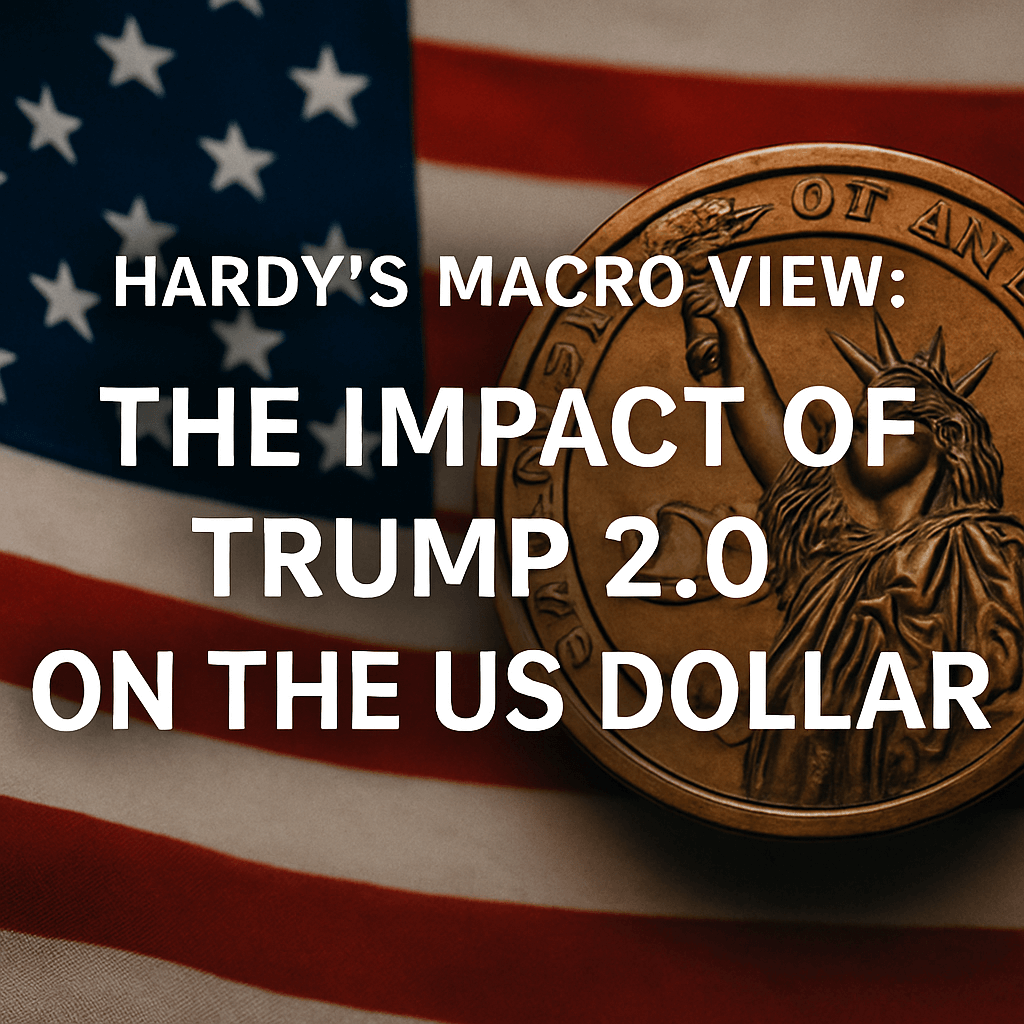Hardy’s Macro View: The Impact of Trump 2.0 on the US Dollar

In this third article of our analysis focused on the Trump 2.0 market era, we explore Rule #3: the US dollar faces substantial weakening in the upcoming months. This assessment builds upon insights shared in the previous articles, which have established a foundation for understanding the dynamics at play.
Anticipated Weakening of the US Dollar
As outlined in earlier discussions, the anticipated weakening of the US dollar (USD) is primarily driven by former President Trump’s revamped economic policies. His administration’s maneuvers towards reducing external imbalances are likely to lead to a less welcoming environment for foreign capital inflows. This situation raises concerns about the declining attractiveness of U.S. assets—both equities and Treasuries—to global investors.
Market Sentiment and the USD Index
The USD index is a comprehensive measure of the dollar’s performance against a basket of currencies, notably the Euro and Japanese Yen.
Recently, the USD Index has experienced fluctuations, falling to three-year lows below 99.0, largely driven by the uncertainties stemming from the Trump era’s policies. As foreign investor sentiment begins to waver, the potential exists for a pronounced decline, with projections suggesting the index could dip as low as 90. Such levels would represent a significant retracement, reminiscent of its value at points in 2021.
A Shift in Global Capital Dynamics
The US dollar has historically been a cornerstone of global trade and finance. The current trajectory of economic statecraft under Trump’s vision appears set to disrupt this established dominance. This shift implies implications for the USD’s role as a global reserve currency and its use in international trade settlements.
Foreign Investment Sentiment
- This administration’s potential to tax foreign investments, outlined in recent legislative proposals, signifies a fundamental shift in dealing with international capital.
- Such measures may prompt sovereign wealth funds to diversify their portfolios, moving away from US-centric investments to reduce their risk exposure.
- A notable uptick in gold prices amidst these shifts indicates a tilt toward alternative stores of value by global investors.
Equity Market Corrections
The US equity market’s concentration presents inherent risks. As discussed in the previous article, the rich valuations of major US indices may undergo scrutiny amid potential corrections. Any significant downturn—whether prompted by a deceleration in key sectors like technology or punitive tax regimes from other nations—would likely result in diminished capital inflows into US markets and a concomitant weakening of the dollar.
Impact of Economic Headwinds
The looming specter of recession poses a critical threat to the dollar’s strength. Several macroeconomic variables could fuel this downturn:
- Fiscal Hangover: A diminishing fiscal stimulus under Trump could constrain economic growth. The earlier fiscal strategies employed by former President Biden aimed at immediate recovery are likely to lead to tighter fiscal policies moving forward.
- Tariff Disruptions: Current tariffs, presented as barriers to free trade, effectively function as a tax on economic activity. These tariffs can lead to preemptive purchases and subsequent declines in future demand, thus impeding investments and hiring.
- Bulging Consumer Sentiment Gaps: Latest sentiment indicators, such as the University of Michigan consumer survey, reveal waning confidence among consumers, which complicates the landscape for retail spending and economic growth.
- Labour Market Weakness: Notable declines in job vacancies signal potential downturns ahead, while deteriorating consumer confidence regarding job availability further clouds economic forecasts.
Forecasting the Dollar’s Decline
In light of the aforementioned factors, our analysis suggests that the USD could weaken considerably, with projections indicating potential movements toward 90 for the USD index. Moreover, significant declines against key currencies like theJapanese yen (projected at 120-125) and the Euro (potentially appreciating to 1.25 or higher) may become evident over the next six to nine months. These shifts underscore the underlying economic and geopolitical changes shaping the Trump 2.0 narrative.
Investor Considerations in the New Landscape
As the financial landscape evolves, vigilance in investment strategy will be paramount. The anticipated USD decline accentuates the need for investors to reassess their portfolio allocations in response to changing market dynamics and global capital flows.
- Recent reports indicate that US holdings within the MSCI World Index peaked above 70%, highlighting the significant weighting of USD assets.
- This volatility across asset classes necessitates that investors adopt a balanced and diversified approach, ensuring that their investments are not overly concentrated in one geographic area or asset class.
Stay informed as we prepare to unveil the final article in this series, which will delve into Rule #4 and its implications for both investors and traders, shedding light on strategies to navigate this fluctuating environment.
Source: diyinvestor